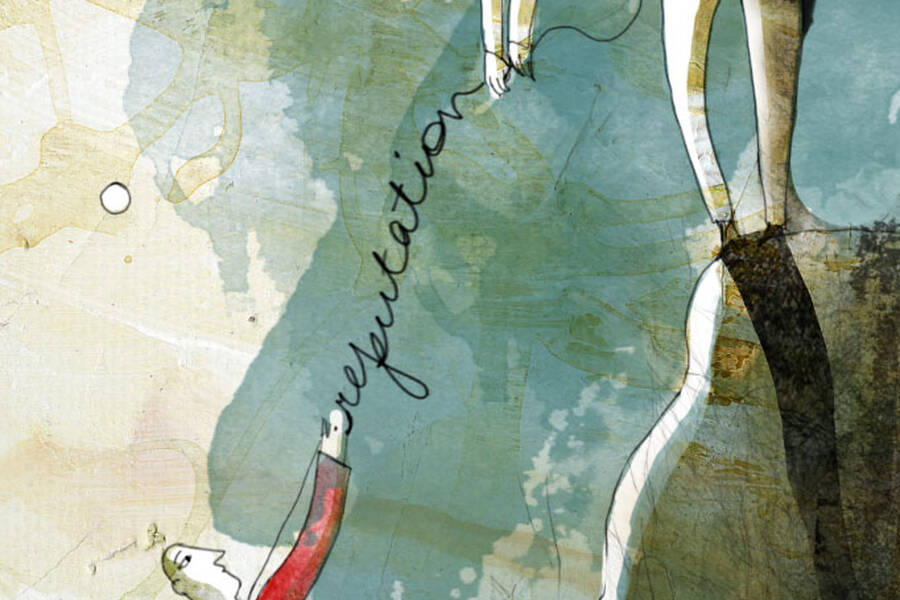Marketing Jan 5, 2016
Why No One Boasts About Being in the Top 9
Find the right way to tout your ranking.

Doomu via iStock
Imagine this conundrum: You’re trying to decide which hotel to book for a family vacation. One claims to be among the nine best hotels in town. Another claims to be one of the top ten. Which would you choose?
That top-ten hotel could be ranked tenth, making it worse than the top nine one. But hearing that a product is in the top nine sounds just a bit funny, doesn’t it? It’s enough to make you pause and think, “what’s this all about?”
New research by Kellogg School marketing professor Kent Grayson and colleagues shows that the incongruousness of a top-nine list means consumers are more likely to favor a top-ten product despite that chance that it is actually worse than the other option.
“It doesn’t take much for us to start reverse engineering what the marketer has done.”
Ever since the 1950s, when the Federal Bureau of Investigation began publishing its “Ten Most Wanted Fugitives” list, ranked lists have grown in popularity. Today there are all sorts of ranked lists, from the top ten restaurants in the world to the top twenty-five entrepreneurs in town. “We were interested in trying to understand how consumers interpret the tactic,” Grayson says.
In a series of six experiments, Grayson, along with Aaron Brough of Utah State University and Mathew Isaac of Seattle University (both former PhD students at Kellogg), tested these types of advertising claims to better understand what garners the best response from consumers. They found that consumers tend to prefer a select set of numbers that marketers use all the time—ten, twenty, twenty-five, fifty, a hundred. The team reports that this predilection is so strong that a weaker claim—top ten—can beat out a stronger one—top nine. Grayson and his colleagues call this the “comfort tier” effect.
However, there are circumstances that curtail the comfort-tier effect. Give consumers a reason to puzzle out what the actual numeric rank is or make them feel pressed for time in evaluating a product, and the advantage of a comfort tier disappears.
Comfort Levels
Because comfort tiers have become so common, “we won’t analyze them unless prompted to do so,” Grayson says.
Instead, consumers tend to see these claims as a mark of quality. In fact, in one experiment that asked participants to evaluate a bank, participants viewed a “top fifty” claim just as favorably as a claim that the bank was “one of the best.”
While the comfort-tier phenomenon may seem strange, Grayson and his colleagues uncovered a sound explanation. Consumers have become accustomed to certain boundaries, so they give it little thought other than to simply accept that the product is among the best. This acceptance is exactly what marketers want.
But when a marketer chooses an unexpected boundary—top seven or top sixteen, for example—the strangeness makes consumers stop and think. And that pause is what matters.
“It’s as if somebody pronounced a word wrong,” Grayson says. This momentary pause leads consumers to evaluate marketer’s intentions. They might try to tabulate the product’s precise rank. “It doesn’t take much for us to start reverse engineering what the marketer has done,” Grayson says.
This kind of careful analysis tends to offset the benefit that would normally come from a top-tier claim.
In one experiment, Grayson and his colleagues showed participants a university advertisement with either a “top 100” or “top 92” claim. As expected, participants had a higher opinion of the university in the top 100. However, when the researchers asked participants to estimate the university’s actual rank before evaluating the claim, this advantage disappeared. “If we get people to think more deeply about the claim, they begin to realize that it’s not likely to be number one, and there are others that are better,” Grayson says.
Grayson and his colleagues found they could also eliminate the comfort-tier effect by introducing time pressure—a technique that has been shown in consumer research to limit how much consumers think about an advertisement. The researchers presented consumers with an advertisement claiming that a campground was one of the top 100 campgrounds or one of the top 92. The researchers advised participants to examine the ad quickly because the screen would advance automatically after two seconds. When the researchers asked the participants to assess the campground, both claims prompted equally favorable scores.
Odd Man Out
Unexpected boundaries do not have to be jarring, however.
In one experiment, participants learned that a list of top hotels had been compiled. Some were told that the list included 101 hotels—predisposing them to expect a “top 101” claim—and others that the list included 100 hotels. Then participants were asked to evaluate an ad claiming a hotel was in the top 99, top 100, or top 101. The most favorable opinions occurred when the length of the list matched the claim. So if participants were told that the list included 101 hotels, they had a less favorable opinion of the hotel if their ad claimed it was among the top 100 than if it claimed it was among the top 101.
The experiment shows that the specific numbers matter less than consumers’ expectations. If unusually numbered lists became more common, consumers would eventually no longer see them as unusual, and they might not stop to wonder about the marketer’s intentions. “It’s not really about round numbers,” Grayson says. “It’s about norms, and it’s about what people are comfortable with.”
What’s more, even a claim that includes an unexpected boundary is better than no claim at all.
In another experiment, the researchers showed participants an advertisement for a bank. One group received an ad that claimed the bank had been ranked one of the 10 best, another received an ad claiming the bank was one of the best nine. The researchers also created a bank ad with no ranking information. Participants who received the “10 best” ad gave the bank higher marks than the other groups. But the “best nine” ad still beat out the ad with no ranking information.
The results of these experiments illustrate just how savvy consumers can be about marketing techniques. However, ads are so ubiquitous and the language of advertising so familiar that we do not always bring this sophistication to bear. Only when we hear the unexpected do we pay close attention.
Issac, Mathew S., Aaron R. Brough, and Kent Grayson. “Is Top 10 Better Than Top 9? The Role of Expectations in Consumer Response to Imprecise Rank Claims.” Journal of Marketing Research. Forthcoming.



